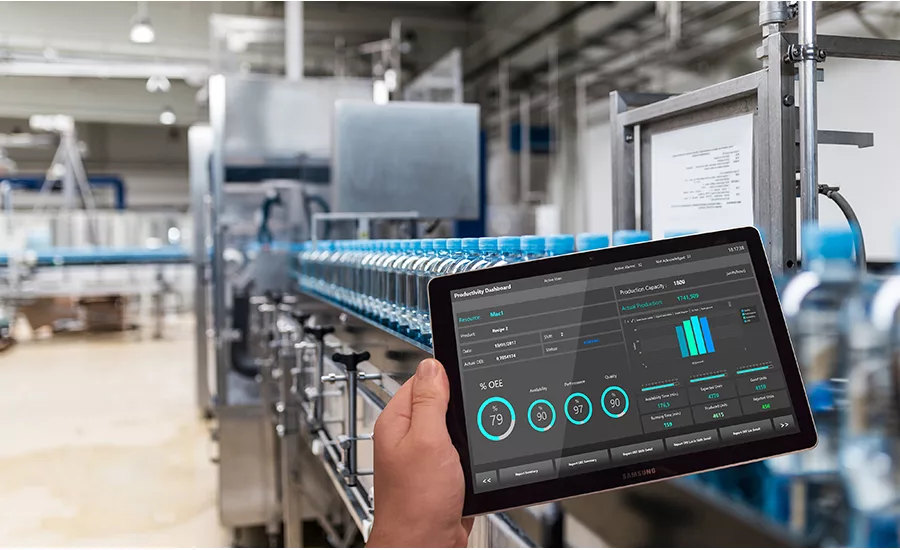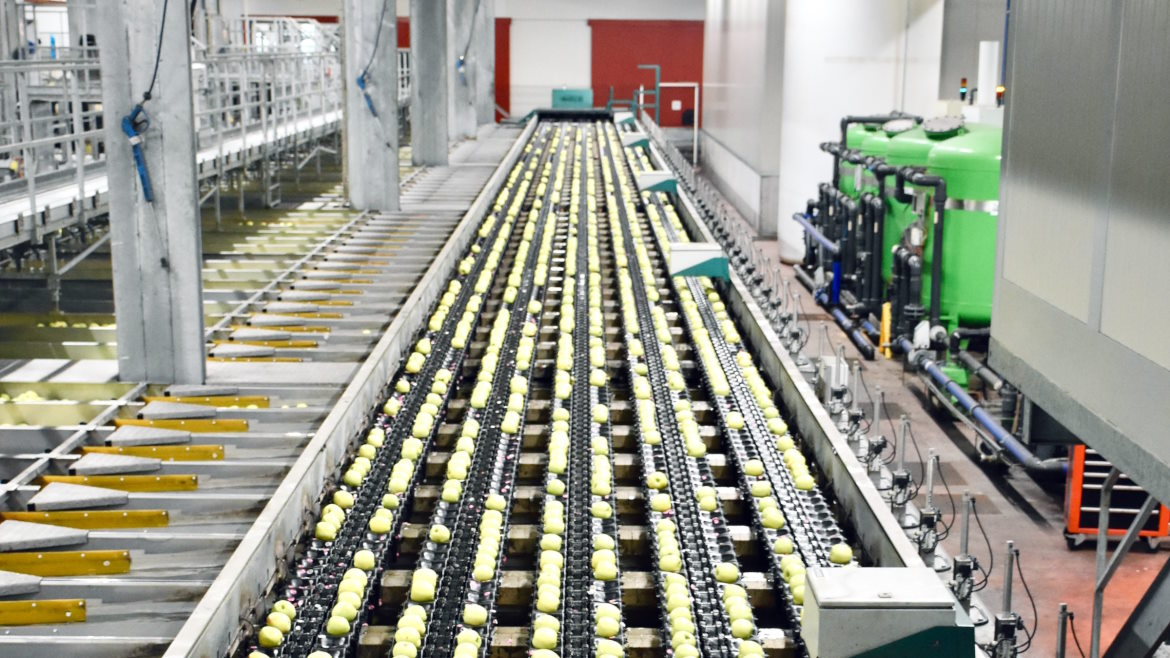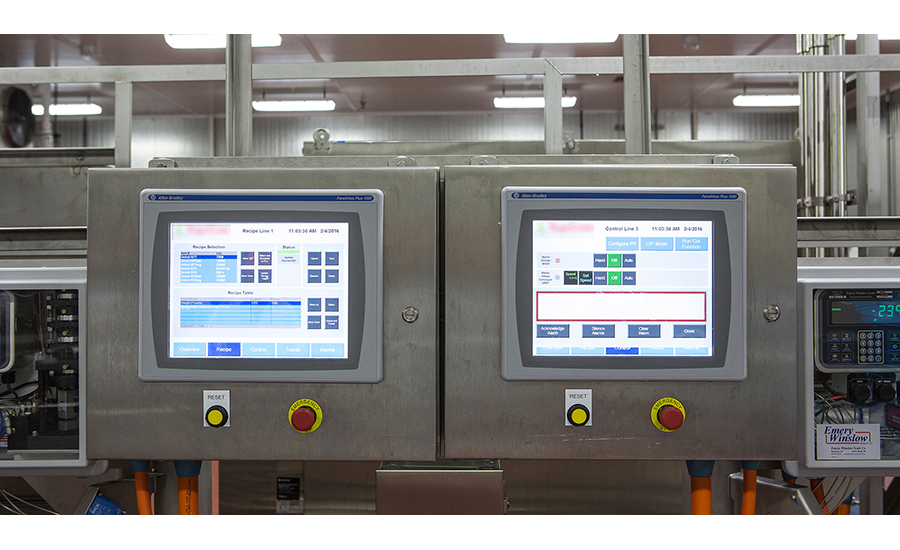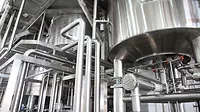How to Improve Operational Availability in Food Processing

Emerson’s Movicon.NExT software platform provides personalized visualization solutions via WebHMI, web clients, and augmented reality, supporting a wide range of user needs throughout all industries and applications. Image courtesy of Emerson
The food processing industry is consistently pressured to maintain high operational availability amidst various constraints. Aging machinery, unexpected equipment downtime and fluctuating production demands strain operational efficiency
Enhancing efficiency and productivity in this industry requires improving operational availability. In this article, we’ll cover how food processing organizations can drive growth and ensure long-term success in challenging market conditions.

Integration of Lean Manufacturing Principles
Lean manufacturing—a systematic approach to minimizing waste without sacrificing productivity—is highly relevant to the food processing industry. It focuses on enhancing value for the customer by optimizing the efficiency of operations and eliminating non-value-adding activities
In food processing, this often means reducing excess inventory, minimizing the movement of materials and streamlining processes to reduce waiting times and defects.
Minimizing downtime is a critical aspect of lean manufacturing. It's particularly vital in the food processing industry, where time is a key factor in maintaining product quality and safety. Strategies like Total Productive Maintenance (TPM) can be instrumental in this regard.
TPM emphasizes proactive and preventive maintenance to maximize the operational efficiency of equipment. Additionally, implementing the “5S” methodology—sort, set in order, shine, standardize, and sustain—helps in creating organized workspaces, minimizing the time lost searching for tools or dealing with workspace inefficiencies.
Tackling Common Industry Challenges
The food processing industry faces a trio of persistent challenges: equipment failures, process inefficiencies and stringent food safety regulations.
Equipment failures, often unexpected, can lead to significant downtime and loss of productivity. Process inefficiencies, whether in the form of energy wastage or suboptimal production processes, further erode operational effectiveness.
The industry must constantly navigate a complex landscape of food safety regulations, ensuring compliance while trying to maintain efficiency. Addressing these challenges requires a multifaceted approach, balancing the need for operational excellence with regulatory adherence.
To address these challenges, the industry can implement a range of solutions and best practices. Regular maintenance and upgrades of equipment can mitigate the risk of failures. Process optimization techniques, such as workflow analysis and automation, can significantly improve efficiency.
To navigate food safety regulations, implement comprehensive quality management systems, and stay abreast of regulatory changes. Additionally, investing in employee training and development ensures that staff are well-equipped to handle these challenges effectively.

Advanced Maintenance Management
Predictive and preventive maintenance play a crucial role in operational availability in the food processing industry.
Predictive maintenance uses data-driven insights to anticipate equipment failures before they occur, allowing for timely interventions and minimizing unplanned downtime. Preventive maintenance involves regular and systematic inspection, cleaning and repair of equipment to prevent issues from arising.
Both approaches ensure that equipment remains available and in optimal working condition, supporting uninterrupted production processes.
Tools and Technologies For Effective Maintenance Management
Integrating maintenance software with Enterprise Resource Planning (ERP) systems streamlines maintenance management in food processing. This integration brings a centralized platform where data on equipment performance, maintenance schedules and inventory management can be accessed and analyzed.
This system facilitates better coordination between different departments, enables more informed decision-making, and enhances overall operational efficiency.
The use of sensors for condition monitoring is a game-changer in maintenance management. Sensors continuously monitor equipment parameters like temperature, vibration and pressure, providing real-time data that can be used to predict potential failures—reducing downtime and maintenance costs while extending the lifespan of the equipment.
Educating employees about the importance of regular equipment checks, the basics of troubleshooting and the use of monitoring tools empowers them to detect and address issues early. This helps prevent equipment failures and fosters a culture of responsibility and continuous improvement among the workforce.
Operational Monitoring and Real-Time Data Analytics
Real-time data is becoming a linchpin in operational decision making in the food processing industry. Ranging from machine performance metrics to supply chain logistics, it enables quick problem-solving, proactive process adjustments and better resource allocation—all crucial for maintaining a competitive edge in the fast-paced food industry.
The ability to access immediate, up-to-date information allows managers to make more informed, timely decisions that directly impact production efficiency and product quality.
Data-driven process optimization involves analyzing operational data on a granular level and uncovering insights that inform process improvements. Techniques like statistical analysis, trend analysis and benchmarking are used to identify inefficiencies, bottlenecks and other areas for improvement.
Techniques for Effective Operational Monitoring
Dashboards and reporting tools provide a centralized, visual representation of critical data, making it easier to understand and analyze. Dashboards can display KPIs, production trends and alerts, creating a quick overview of the operational status.
Data-driven process optimization involves analyzing operational data on a granular level and uncovering insights that inform process improvements. Techniques like statistical analysis, trend analysis and benchmarking are used to identify inefficiencies, bottlenecks and other areas for improvement.
This enables the food processing industry to continuously refine processes, enhance productivity and maintain high quality standards.
Leveraging artificial intelligence (AI) for predictive analytics represents a significant advancement in operational monitoring. AI algorithms can analyze vast amounts of data to predict trends, anticipate potential issues and suggest optimization tactics.
This predictive capability is invaluable in planning maintenance, managing inventory, optimizing production schedules and even predicting market demands. Most of all, it allows food processing facilities to stay ahead of potential problems and adapt swiftly to changing market conditions.
The Role of Connected Workers in Process Optimization
Connected manufacturing is integral to operational efficiency in the modern food processing industry. Equipping employees with the right tools and technologies lets them access real-time information, communicate more effectively and make quicker, more informed decisions.
As a result, processes are optimized, response times are reduced and the overall efficiency of operations is significantly increased.
Technologies Enabling Worker Connectivity and Collaboration
Wearable tech and mobile devices are revolutionizing the way workers communicate in real-time. Devices such as smartwatches, headsets and tablets enable employees to access information, report issues and collaborate with colleagues without disrupting their workflow.
Collaboration platforms provide a shared space for communication, knowledge sharing and project management. These platforms allow teams to work together regardless of their physical location, and they contribute to continuous process refinement. They also house important data and insights, which can be used for training and guiding future improvements.
Investing in training and skill development in a digital environment maximizes the benefits of connected worker technologies. Providing employees with training on digital tools and platforms enhances individual skills and contributes to the overall digital literacy of the organization, which is crucial for staying competitive.

Employing IoT Technologies for Deeper Operational Insights
IoT technologies enable the collection and analysis of data from various points in the production process. This interconnected network offers unparalleled visibility into operations, but it also helps in ensuring compliance with food safety standards and reducing environmental impact.
IoT-enabled devices facilitate continuous monitoring of equipment health, leading to timely maintenance and reduced downtime. They also assist in optimizing the utilization of resources , such as energy and raw materials, saving costs and improving sustainability.
Furthermore, IoT technologies enable precise control over production processes, enhancing product consistency and quality. These advantages enable food processing companies to achieve higher levels of operational excellence and customer satisfaction.
Conclusion
The integration of technology in food processing operations is set to become even more sophisticated. Advancements in AI, machine learning and robotics are expected to further streamline processes and enhance precision. The industry is likely to see more comprehensive and integrated systems, providing end-to-end solutions that cover every aspect of production.
In a sector where consumer demands, regulatory requirements and technological capabilities are constantly evolving, staying static is not an option. Companies that prioritize innovation and continuously seek ways to improve their operations will be the ones that thrive.
Looking for a reprint of this article?
From high-res PDFs to custom plaques, order your copy today!









